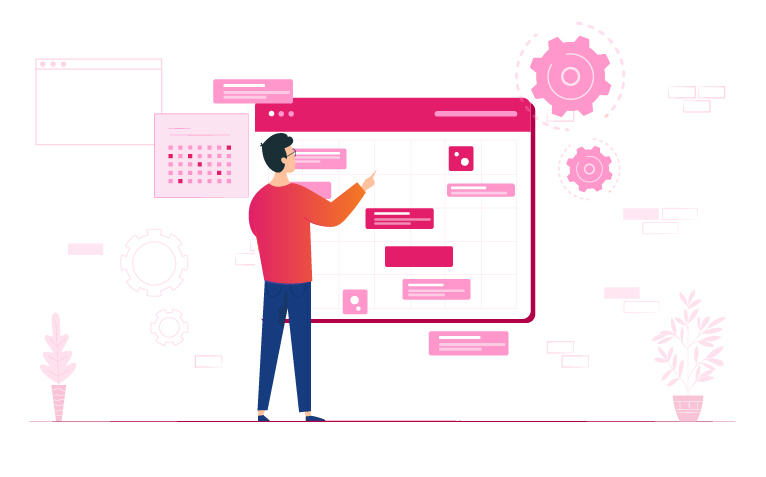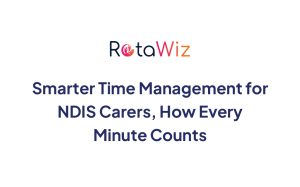23 July, 2025
NDIS Rostering Automation: The Complete 2025 Guide for Disability Providers
NDIS Software
7 min read

As 2025 unfolds, NDIS providers across Australia are being challenged like never before. Growing participant needs, evolving compliance requirements, and increasing pressure on administrative teams have made one thing abundantly clear: manual rostering is no longer sufficient.
That’s where rostering automation comes in, offering disability providers a reliable, streamlined way to manage shifts, care plans, and workforce logistics without the inefficiencies of outdated systems.
Whether you’re a new provider just navigating NDIS requirements or a seasoned organisation managing a growing team, this guide will help you understand why rostering automation is essential in 2025, what features to look for, and how to get started.
What is NDIS Rostering Automation?
Rostering automation refers to the use of digital tools to manage staff schedules, match carers with clients, and streamline shift allocations. It eliminates the need for spreadsheets, endless calls, or whiteboard rosters by enabling centralised, rule-based shift planning.
More importantly, when designed for NDIS providers, automated rostering platforms consider:
- Worker availability
- Client preferences and care needs
- Compliance documentation
- Funding limits and plan budgets
Tools like RotaWiz are purpose-built for NDIS operations, making rostering not just faster but also more accurate, compliant, and client-focused.
Why Automation Matters for NDIS Providers in 2025
Manual rostering methods may work for very small teams, but they rarely scale. With more participants, more support workers, and more reporting requirements, errors become common, leading to confusion, cancellations, compliance risks, and staff burnout.
In 2025, several trends are driving the adoption of automated rostering:
- NDIS funding reviews have placed stronger emphasis on time tracking and billing accuracy
- Providers must demonstrate adherence to care plans and consistent documentation
- The expectations for real-time communication between teams and clients are increasing
- Audits now demand detailed logs of service delivery and incident reporting
Without automation, managing these challenges requires significant manual effort, often at the expense of participant care.
What Does an Automated Rostering System Actually Do?
Let’s explore how rostering automation works in a practical context, drawing from features offered by platforms like RotaWiz.
Drag-and-Drop Shift Scheduling
Rather than juggling spreadsheets, admin teams can simply drag and drop available workers into open shifts. The system highlights conflicts, double-bookings, and staff who are unavailable , removing guesswork and human error.
Real-Time Staff Availability
Support workers can mark their availability and preferences via a web portal or app. This ensures you always assign shifts based on who is genuinely available, not just who was last on the list.
Care Plan Integration
Participant care plans can be linked directly to the roster. This ensures that each shift is aligned with the client’s support needs, preferences, goals, and approved hours. RotaWiz, for example, offers care plan management that integrates with daily rostering to maintain compliance.
Mobile Access for Admin and Carers
Rostering automation isn’t just for support workers; it’s also incredibly useful for admins and coordinators. Through a mobile app, administrators can:
- View and approve shifts
- Make real-time roster changes
- Monitor staff availability
- Receive alerts and updates
- Track incidents or notes logged from the field
- Clock in & clock out of shifts
This level of flexibility ensures that admin teams can manage rosters and respond to changes, even when they’re away from their desks.
Meanwhile, carers can use the same mobile platform to:
- View their roster and shift details
- Access participant profiles and care notes
- Log shift start/end times
- Submit incident reports on the go
- Add shift notes with speech-to-text easily
- Maintain their availability and manage their leaves
Document and Compliance Tracking
Worker screening checks, training records, certifications, and incident logs can be stored and managed in one central platform. The rostering engine considers compliance before assigning a shift, helping you meet NDIS Practice Standards more confidently.
Invoicing Integration
Integrated tools can generate invoices based on completed shifts, correct rates, and NDIS plan funding rules. RotaWiz even supports accounting integration with platforms like Xero & QuickBooks, streamlining backend operations.
What Features Should You Look For?
When selecting an NDIS rostering solution, look for the following must-have features to ensure long-term value and compliance:
Feature | Why It’s Important |
Care plan scheduling | Aligns shifts with participant needs |
Real-time updates | Keeps staff informed of changes instantly |
Mobile-friendly interface for admin and carers | Enables both teams to manage rosters from anywhere |
Compliance alerts | Helps avoid assigning unqualified or non-compliant staff |
NDIS pricing support | Ensures accurate funding allocations |
Incident reporting | Allows instant documentation of incidents from the field |
Roster conflict resolution | Prevents overlapping shifts or over-allocation |
Cloud-based access | Enables remote management across multiple locations |
Benefits of Switching to Automation
Rostering automation offers more than just convenience. It brings long-term structural benefits for NDIS organisations of all sizes:
- Reduces admin workload: Less time spent on back-and-forth calls, emails, and edits
- Improves shift coverage: Right staff are assigned faster, reducing cancellations
- Enhances participant care: Supports better continuity and planning around participant needs
- Strengthens compliance: Automatic logs and reports are ready for audit time
- Supports team satisfaction: Carers can easily see their schedules, get notified of changes, and feel supported by an organised system
Automation & NDIS Compliance
Compliance is non-negotiable for NDIS providers, especially with ongoing scrutiny and audits. Automation ensures that:
- All workers have current screening checks before being scheduled
- Participant plans are followed and tracked with evidence
- Incident reports are documented and timestamped
- Service delivery records are stored securely
- Worker fatigue and shift limits are respected
This kind of consistent record-keeping is difficult to achieve manually, especially when scaling your business or managing remote teams.
How to Transition Smoothly to Automated Rostering
If your organisation is currently using spreadsheets, whiteboards, or a patchwork of basic tools, here’s a step-by-step transition plan:
1. Review Your Current Process
Identify current pain points, shift errors, last-minute cancellations, and compliance issues, and define what you want to improve.
2. Choose the Right Software
Look for NDIS-specific solutions like RotaWiz, which are designed with the local regulatory and funding context in mind.
3. Start with a Pilot Team
Test the platform with a small team or region before rolling it out agency-wide. This helps you refine your onboarding and training process.
4. Train Staff Effectively
Ensure admin teams and support workers understand how to use the platform. Use walkthroughs, videos, or personalised training sessions.
5. Monitor, Adjust, and Optimise
Once live, regularly review how the system is performing. Are shifts being filled efficiently? Are reports being generated correctly? Make tweaks as needed.
A Note on Scalability
One of the biggest advantages of rostering automation is scalability. Whether you’re managing 10 staff or 100, the system remains consistent, accurate, and efficient. You can expand into new suburbs, onboard new workers, or support more clients, all without overwhelming your back-office team.
Common Pitfalls to Avoid
As you transition to automation, here are some things to watch out for:
- Over-customising the platform: Stick with standard workflows when possible to save time and cost.
- Under-training your team: A great system won’t work if people aren’t confident using it.
- Delaying implementation: Waiting for the “perfect time” usually leads to missed opportunities for improvement.
Instead, start small, build confidence, and let the system work for you.
Final Thoughts
In today’s dynamic and demanding NDIS environment, relying on manual rostering is not only inefficient, but also risky. Automating your rostering process is one of the most impactful changes you can make for smoother operations, improved compliance, and better participant outcomes.
It’s about freeing your team from repetitive tasks, reducing human error, and building a service model that scales with confidence.
Ready to Simplify Your Rostering?
Tools like RotaWiz are built specifically for NDIS providers, offering mobile shift management for both Mobile App for carers and Mobile App for admins, care plan alignment, compliance features, and a flexible pricing model that grows with your team.
Start with a free plan or book a demo today at rotawiz.com.au
Empower your staff. Support your clients. Automate with confidence.
Related Stories for You
Top 10 Best NDIS Rostering Software in Australia for 2026
November 5, 2025
Smarter Time Management for NDIS Carers, How Every Minute Counts
October 31, 2025


